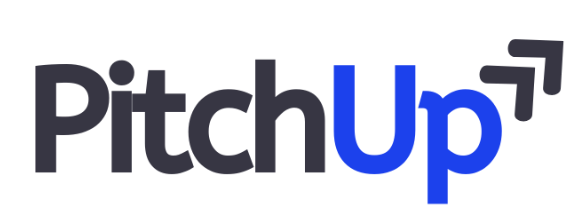Investment Pitch
In most hedge fund interviews, the investment pitch is the single most important component. It offers the clearest signal of a candidate’s readiness to think like an investor. Unlike banking or consulting interviews, which often focus on past deal experience or structured logic, public markets interviews assess forward-looking judgment, risk calibration, and differentiated insight — all of which are revealed through the quality of the pitch.
This article outlines what constitutes a strong pitch, how candidates should prepare, and what interviewers are evaluating in content, process and mindset.
1. Objective of the Pitch
The pitch serves as a proxy for how a candidate would contribute on the desk. Strong candidates demonstrate:
The ability to develop independent investment views
A clear understanding of valuation frameworks and risk/reward
An appreciation for catalyst timing and market context
The ability to communicate investment ideas clearly and concisely
Critically, interviewers are less concerned with whether the idea is “correct” in hindsight and more focused on the candidate’s process, ability to defend their thesis under pressure, and how closely their thinking aligns with the fund’s philosophy.
2. Selecting the Right Idea
Idea selection is a filter. It shows judgment before the pitch even begins.
Do:
Choose a mid-cap or underfollowed name with sufficient liquidity
Avoid names already held by the fund (check 13F filings via WhaleWisdom)
Align the pitch with the fund’s mandate (holding period, geography, style)
Present ideas with a clear asymmetrical return profile
Avoid:
Mega-cap names unless there is a non-consensus variant view
Crowded shorts without a clear catalyst path
Recent IPOs with low float or borrow constraints
3. Pitch Structure: The Buy-Side Standard
Most funds expect pitches to follow a logical, bottom-up structure. A recommended format includes:
Position – State clearly: “This is a long” or “This is a short”
Background – Business model, financial profile, revenue segmentation
Thesis – 3–5 differentiated drivers vs. consensus or sell-side
Catalysts – Specific, time-bound events that will prove the thesis right
Data Points – KPIs or industry signals that support or challenge the thesis
Risks – Core bear points and how you’ve thought about them
Execution – Entry price, exit price, time horizon, and risk/reward skew
This structure should take 5–10 minutes in an interview context. Prepare to be interrupted frequently. Strong candidates anticipate questions and prioritize signal over excessive detail.
4. Valuation Approach
Valuation is where candidates often expose either shallowness or rigidity in thinking.
For FCF-generative companies, focus on P/E and P/FCF, not EV/EBITDA
For earlier-stage or high-growth names, use EV/Revenue only if you can bridge it to long-term margins and an implied terminal multiple
Build a reverse DCF to assess what the market is pricing in today
Always define a base, bull, and bear case, and be explicit about your assumptions for margin structure, capital intensity, and reinvestment
Example:
“At $35/share, the stock is trading at 22x next year’s EPS, which embeds ~300bps of margin expansion and a reacceleration in revenue growth to 18% YoY — both of which we view as unlikely given recent cost inflation and decelerating new customer adds.”
5. Catalyst Path & Timing
Funds typically don’t take positions without a roadmap. A good pitch includes:
Near-term catalysts (1–3 quarters): earnings events, product launches, regulatory decisions, insider transactions, etc.
Intermediate-term inflections: changes in pricing power, competitive dynamics, margin structure
If no clear catalyst exists, justify it with duration and valuation discipline
6. Risk Assessment
Every thesis has a bear case. The best candidates:
Proactively raise the 2–3 most credible risks
Understand the opposing view and its merits
Offer a clear framework for mitigating or monitoring downside
Quantify downside scenarios alongside base and bull
Do not dismiss risks. A candidate who acknowledges risk but maintains conviction is viewed far more favorably than one who deflects.
7. Execution and Payoff Skew
Quantify the payoff.
Define entry and exit prices, expected return, and downside floor
Good ideas target at least a 2–3x upside/downside ratio
Mention borrow cost, float, and short interest for shorts
Consider capital at risk, duration, and the expected return profile over time. Think like a PM, not a junior analyst.
8. Additional Notes on Short Ideas
Short pitches are higher risk — but higher signal.
Three common short types:
Secular Decline (e.g. legacy industries under structural pressure)
Terminal Risk (e.g. unsustainable business model, fraud, liquidity crunch)
Overvaluation + Catalyst (e.g. excessive multiple on deteriorating fundamentals)
Shorts must be well-timed, well-researched, and framed around impending catalysts, not just valuation excess.
9. Interview Context and Format
Most processes unfold as follows:
Headhunter Screen: 90-second elevator pitch
Initial Round: Full pitch discussion, market views, fit
Final Rounds: Case study (1-week deadline), full write-up or deck (3–5 pages or 10–15 slides), often with a live presentation
Have 1–2 long ideas and 1–2 short ideas prepared, with a short-form and long-form version of each.
Strong hedge fund candidates don’t just deliver a compelling idea. They demonstrate the thought process behind it, how they source names, structure theses, manage risk, and tie it all to an actionable trade.
That’s what interviewers are ultimately evaluating: not whether you’re “right,” but whether you can think like an investor.
